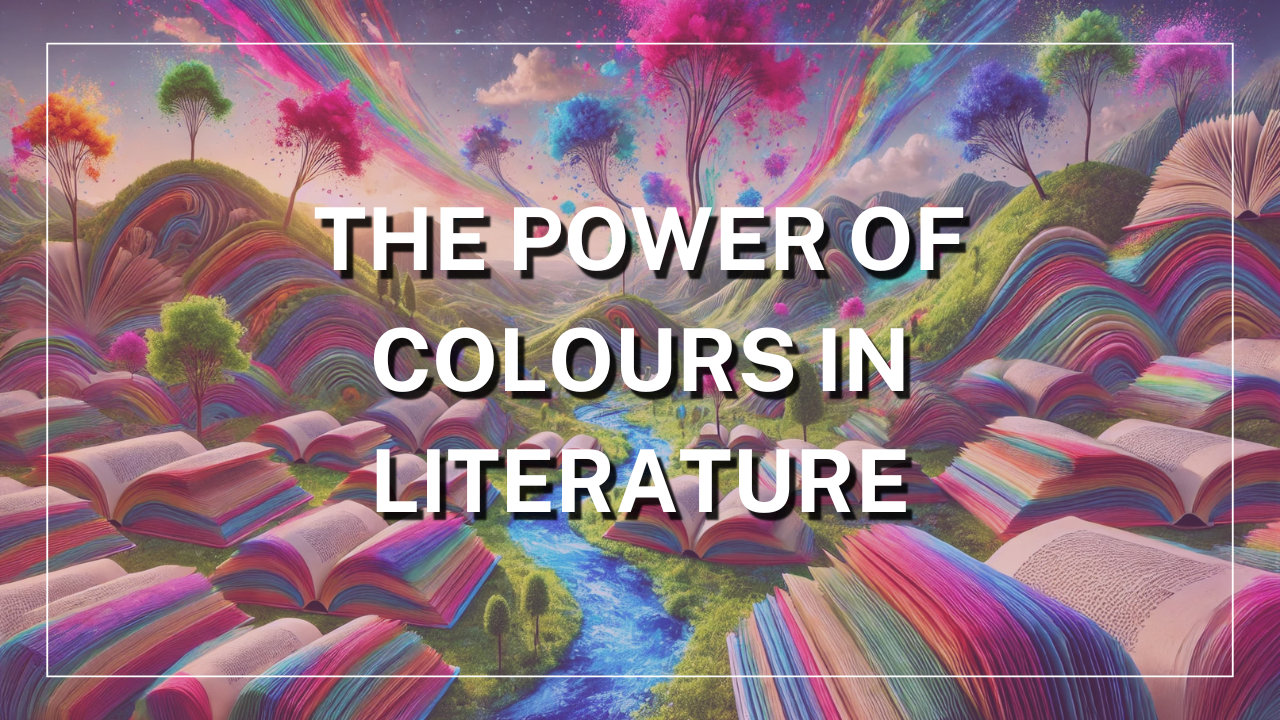Colours in literature are more than just visual descriptions—they carry deep symbolic meanings, shaping themes, emotions, and character arcs. From passion and power to oppression and freedom, colours enhance storytelling, leaving a lasting impact on readers. Here’s a look at 10 books that use colours in their titles and narratives to convey powerful messages.
1. The Color Purple – Alice Walker (Purple: Spirituality, Power, Beauty) The colour purple symbolizes resilience, self-worth, and the beauty of life. In the novel, Shug Avery tells Celie that noticing the colour purple in nature is a way of acknowledging life’s blessings. This reinforces Celie’s journey of empowerment and self-discovery.
2. Blue Sisters – Coco Mellors (Blue: Sadness, Healing, Connection) Blue often represents melancholy and depth. In Blue Sisters, it reflects grief, trauma, and emotional healing as the sisters navigate loss and relationships, emphasizing the bond that ties them together despite hardships.
3. Anne of Green Gables – L. M. Montgomery (Green: Nature, Growth, New Beginnings) Green symbolizes nature, renewal, and belonging. Green Gables represents Anne’s sanctuary, where she flourishes intellectually and emotionally. The colour reflects Anne’s free-spirited, imaginative nature and her personal growth.
4. The Yellow Wallpaper – Charlotte Perkins Gilman (Yellow: Oppression, Madness, Decay) Yellow, typically associated with warmth and energy, is used ironically to symbolize confinement and psychological deterioration. The protagonist’s descent into madness mirrors the oppressive nature of the wallpaper’s colour and pattern, representing the constraints of patriarchy.
5. The Priory of the Orange Tree – Samantha Shannon (Orange: Power, Fire, Protection) Orange is associated with strength and divine power. In this fantasy novel, the orange tree is a symbol of magic and protection, representing the battle between good and evil and the preservation of a royal lineage.
6. The Scarlet Letter – Nathaniel Hawthorne (Scarlet/Red: Sin, Passion, Strength) The red letter “A” on Hester Prynne’s dress symbolizes shame and sin but later transforms into a mark of strength and resilience. Red in the novel signifies both the condemnation of society and the passionate defiance of the protagonist.
7. The White Tiger – Aravind Adiga (White: Purity, Deception, Survival) The white tiger is a rare and powerful creature, symbolizing uniqueness and cunning. While white often signifies innocence, in this novel, it represents Balram’s ability to navigate corruption and injustice in his quest for success.
8. Black Beauty – Anna Sewell (Black: Strength, Suffering, Dignity) The black horse symbolizes endurance and dignity despite hardship. The colour black, often linked to suffering and perseverance, reflects Beauty’s journey through cruelty and kindness, highlighting themes of empathy and morality.
9. The Silver Chair – C. S. Lewis (Silver: Mystery, Magic, Reflection) Silver is associated with wisdom and illusion. The silver chair represents the deceptive power of enchantment, entrapping Prince Rilian in a false reality. It serves as a metaphor for breaking free from manipulation and discovering the truth.
10. Golden Son – Pierce Brown (Gold: Power, Wealth, Legacy) Gold represents status, ambition, and the burden of privilege. Darrow, the protagonist, must navigate the elite Gold caste’s rigid power structures, where the colour symbolizes both dominance and the struggle to redefine one’s destiny.
Colours in literature are powerful tools that shape narratives, deepen symbolism, and evoke emotions. Next time you read a book with a colour in its title, pay attention—it might reveal more than you expect!

